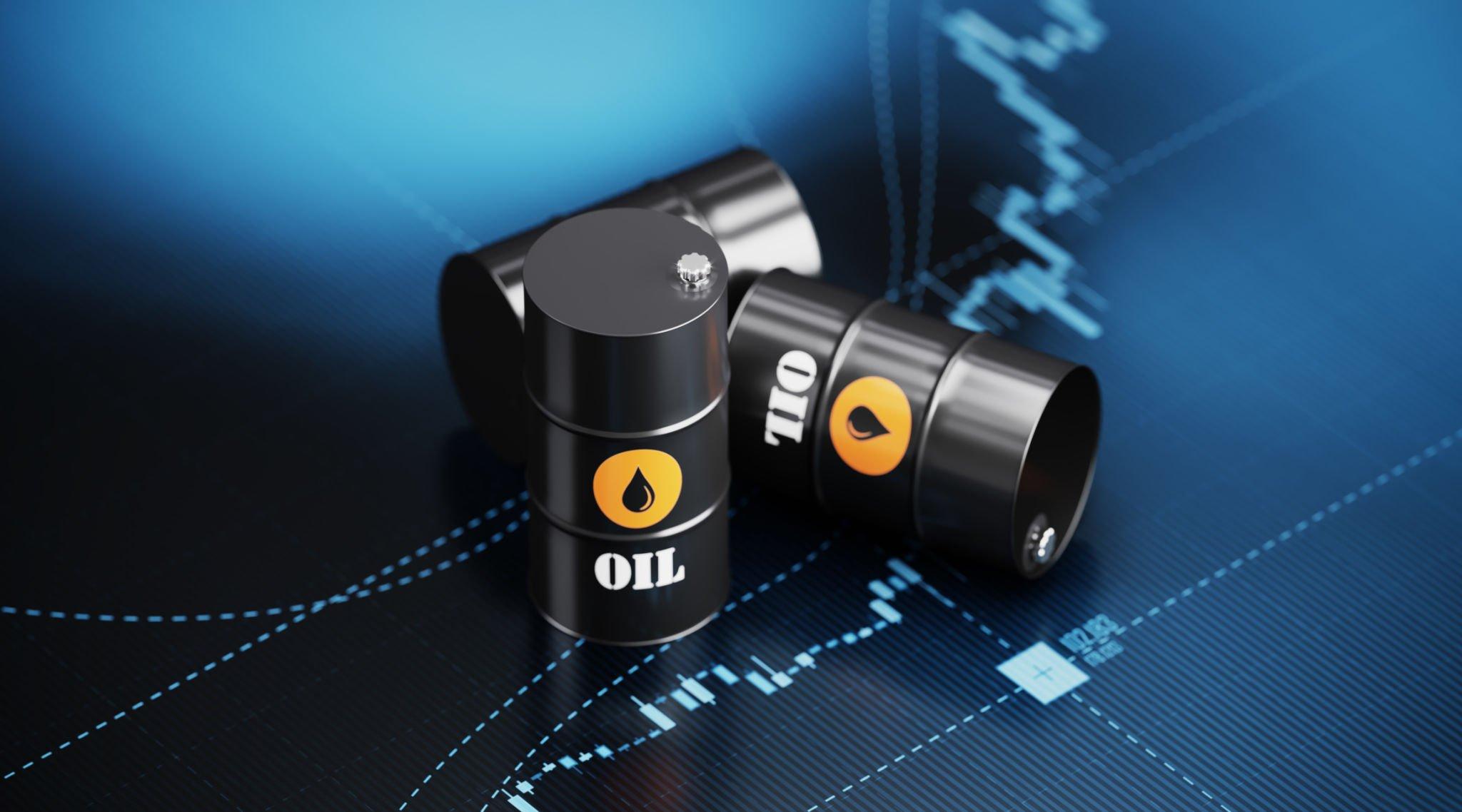Innovation
How to Become an Oil Trader: A Comprehensive Guide

Are you fascinated by the dynamic world of commodities, intrigued by the energy sector, and eager to dive into the exciting world of oil trading? Becoming an oil trader can be a rewarding and financially lucrative career path, but it requires a solid understanding of the industry, essential skills, and a strategic approach to succeed. In this comprehensive guide, we’ll walk you through how to become an oil trader, from education to practical tips for success.
What is Oil Trading?
Oil trading refers to the buying and selling of oil and oil-related products in the global marketplace. Oil is one of the most important commodities in the world, serving as a vital source of energy for various industries, transportation, and households. The oil trading industry is a significant component of the global economy, involving the exchange of crude oil, refined petroleum products, and other derivatives.
Oil trading can take place in various markets, including physical markets where actual barrels of oil are bought and sold, as well as financial markets where oil futures and options contracts are traded.
You may like,
Ecommerce PPC Management for Small Businesses: Boosting Sales with Smart Advertising
How Oil Trading Works?
Oil trading operates within a complex global marketplace, involving various participants, markets, and instruments. The primary goal of oil trading is to buy low and sell high, generating profits from price differentials and market fluctuations. Here’s an overview of how oil trading works:
1. Market Participants: Oil trading involves a diverse range of participants, including:
- Producers: Companies that extract crude oil from the ground.
- Refineries: Facilities that process crude oil into refined products like gasoline, diesel, and jet fuel.
- Trading Firms: Entities that engage in buying and selling oil, often specializing in specific markets or regions.
- Financial Institutions: Banks and investment firms that may participate for speculative or hedging purposes.
- End Users: Companies in various industries that require oil as a raw material (e.g., airlines, shipping companies) or for energy needs.
2. Marketplaces: Oil trading occurs in both physical and financial markets:
- Physical Markets: In the physical market, actual barrels of oil or refined products are bought and sold for immediate delivery. This market involves negotiation, logistics, and the physical movement of goods.
- Financial Markets: In financial markets, oil futures, options contracts, and other derivatives are traded. These contracts are agreements to buy or sell oil at a predetermined price and date in the future. Financial markets provide opportunities for hedging and speculation.
3. Price Determinants: The prices of oil are influenced by a variety of factors:
- Supply and Demand: Global supply and demand dynamics significantly impact prices. Factors like geopolitical events, production levels, inventory levels, and economic growth can influence the balance between supply and demand.
- Market Sentiment: News, rumors, and market sentiment can lead to short-term price fluctuations.
- Geopolitical Events: Conflicts, sanctions, and political instability in oil-producing regions can disrupt supply, leading to price spikes.
- Economic Indicators: Economic data, such as GDP growth, employment figures, and consumer demand, can affect oil prices.
4. Trading Strategies: Traders use various strategies to capitalize on market opportunities:
- Speculation: Traders speculate on future price movements, aiming to profit from correctly predicting price trends.
- Hedging: Companies use oil derivatives to hedge against price risk. For example, an airline may buy oil futures to protect against rising fuel costs.
- Arbitrage: Traders exploit price differences between different markets or related commodities.
- Spread Trading: Traders capitalize on price differentials between related oil products or different delivery months.
5. Regulation and Oversight: Oil trading is subject to regulatory oversight to ensure transparency, fair practices, and market stability. Regulatory bodies and exchanges monitor trading activities.
6. Technology: Advanced trading platforms, data analysis, and real-time information are crucial for modern oil trading. Automated trading algorithms are also used by some participants.
Overall, oil trading is a dynamic and complex endeavor that requires in-depth market knowledge, risk management skills, and the ability to adapt to changing market conditions. It plays a crucial role in the global economy, influencing energy prices and affecting various industries.
Different Types of Oil Trading
Oil trading encompasses various types and strategies based on the specific markets, products, and timeframes involved. Here are some common types of oil trading:
1. Physical Oil Trading: In this type of trading, actual barrels of crude oil or refined products are bought and sold for immediate delivery. Physical oil trading involves negotiating contracts, arranging logistics, and handling the physical movement of oil. It’s essential for companies involved in the production, transportation, and distribution of oil and oil products.
2. Oil Futures and Options Trading: This is a significant part of the oil derivatives market. Traders use futures contracts and options to speculate on future oil prices, hedge against price risk, or gain exposure to the oil market without owning the physical commodity. Oil futures contracts specify the price and delivery date for a predetermined quantity of oil. Options provide the right (but not the obligation) to buy or sell oil at a specific price within a defined timeframe.
3. Spread Trading: In spread trading, traders take advantage of price differentials between related commodities or different delivery months of the same commodity. For example, a trader may simultaneously buy oil for delivery in one month and sell oil for delivery in another month if they expect the price difference to change.
4. Arbitrage: Arbitrage involves exploiting price discrepancies between different markets or trading venues. In the context of oil trading, this could mean buying oil in one region where the price is temporarily low and selling it in another region where the price is higher, effectively profiting from the price differential.
5. Swing Trading: Swing traders aim to capitalize on short- to medium-term price swings. They may use technical analysis, market trends, and short-term price patterns to identify entry and exit points.
6. Day Trading: Day traders buy and sell oil within the same trading day, aiming to profit from intraday price movements. This approach requires close attention to market fluctuations and a strong understanding of short-term trends.
7. Long-Term Investing: Some investors take a long-term approach, holding positions in oil-related assets for an extended period, such as months or years. This could involve investing in oil-producing companies, energy ETFs, or other oil-related securities.
8. Speculation and Hedging: Traders and companies often engage in speculative trading, attempting to profit from predicting future price movements. Additionally, companies in industries highly sensitive to oil price fluctuations, such as airlines, may use oil derivatives to hedge against adverse price movements, ensuring predictable costs.
It’s important to note that each type of oil trading has its own risk profile, strategies, and considerations. Traders and investors need to understand the specific market they are involved in and tailor their approaches accordingly. Risk management, market analysis, and staying informed about global economic and geopolitical events are crucial aspects of successful oil trading, regardless of the type.
How to Become an Successful Oil Trader?
Now that we have a comprehensive understanding of oil trading, let’s dive into the practical steps to becoming a successful oil trader. This journey requires a combination of education, skills development, networking, and hands-on experience. Follow these steps to pave your way to a rewarding career in oil trading:
- Educate Yourself: Gain a deep understanding of the oil market, including supply and demand dynamics, geopolitical factors, economic indicators, and the impact of global events on oil prices. Stay updated on industry news and trends.
- Develop Strong Analytical Skills: Master the art of analyzing market trends, interpreting data, and identifying potential trading opportunities. Effective analysis is crucial for making informed trading decisions.
- Risk Management: Implement robust risk management strategies to protect your capital. Set clear stop-loss and take-profit levels for each trade, and avoid risking more than a small percentage of your trading capital on any single trade.
- Start Small: Begin with a manageable amount of capital, and focus on gaining experience and building a successful track record. Avoid overleveraging, as it can lead to significant losses.
- Choose a Trading Strategy: Select a trading strategy that aligns with your risk tolerance, time availability, and market expertise. Whether you’re a day trader, swing trader, or position trader, stick to a strategy that suits your style.
- Keep Emotions in Check: Emotional discipline is essential in trading. Avoid making impulsive decisions based on fear or greed. Stick to your trading plan and stay objective.
- Practice with a Demo Account: Many trading platforms offer demo accounts that allow you to practice trading with virtual money. Use these accounts to test your strategies and gain confidence before trading with real capital.
- Continuous Learning: The oil trading landscape is constantly evolving. Stay committed to continuous learning by attending workshops, reading industry publications, and expanding your knowledge of trading techniques.
- Network: Build a network within the industry by attending conferences, joining professional organizations, and connecting with experienced traders. Learning from others’ experiences can be invaluable.
- Adapt to Changing Conditions: Be flexible and willing to adapt your strategies as market conditions change. Oil trading can be volatile, and your ability to adjust to new information is crucial.
- Maintain Disciplined Trading Hours: Establish a routine and maintain disciplined trading hours. Avoid overtrading or trading based on FOMO (fear of missing out).
- Keep Detailed Records: Maintain thorough records of your trades, including entry and exit points, reasons for each trade, and the outcome. This data is essential for analyzing your performance and identifying areas for improvement.
Remember that success in oil trading takes time and experience. Be patient, stay disciplined, and continually refine your skills and strategies. It’s a challenging field, but with dedication and a commitment to continuous improvement, you can increase your chances of becoming a successful oil trader.
Final Thought
Becoming an oil trader is a journey that requires dedication, continuous learning, and a passion for the industry. By understanding what oil trading is, how it works, the various types of trading, and following the steps outlined here, you’ll be well on your way to pursuing a rewarding career in oil trading.












